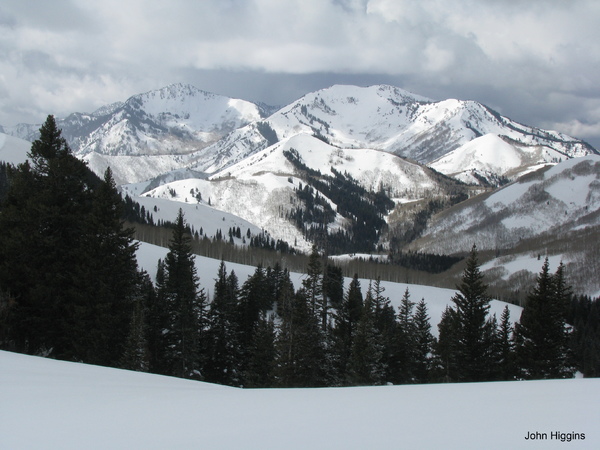Dublin Core
Title
Description
Today, Utahns experiencing drought due to climate change are encouraged to “pray for rain.” But, these pleas are yet another chapter in Utah’s long history of water anxiety. In the 1950s, scientists turned to the latest technology to help alleviate the threat of drought. Cloud-seeding -- or the process of making rain -- wasn’t the miracle cure many Utahns hoped for, but it does continue to offer a small increase in precipitation long after its mid-century heyday.
In 1950, Utahns were desperate for rainfall after eight long months of drought. By the spring of 1951, a handful of counties in central and southern Utah enrolled in the largest cloud-seeding program attempted in the country. Propane-powered generators were placed in participating communities, releasing microscopic silver iodide particles into cold clouds, causing raindrops to form. Frozen together around dust particles, the water droplets fell from the sky as snow. Scientists expected seeded clouds to yield up to 15% more precipitation, with the potential to increase runoff into Utah’s rivers.
Doubts about the efficacy of cloud-seeding plagued the program. Skeptics were quick to note that the rain or snow from a large, seeded cloud would hardly be enough to wet the sidewalk. In April 1951, residents of Sevier County and the surrounding region saw their first meaningful rainfall in months: 0.27 inches. Uncertain whether they could thank technology or divine intervention, the locals were nonetheless ecstatic for this scant amount of rain.
By 1973, the Utah Division of Water Resources oversaw cloud-seeding projects. The tax-funded program allowed Utah to grow one of the largest weather modification efforts in the West, with the state boasting over 130 cloud-seeding generators. Utah's cloud-seeding generators are not focused on increasing snow in ski resorts, but are situated to maximize runoff, bolstering agricultural and municipal water supplies.
Today, roughly 7% of Utah’s snowflakes form around silver iodide particles shot from these generators. As climate change and extreme drought continue to threaten life in the West, weather modification may be just another way that humans try to alter the landscape to support our survival.
Creator
Source
_______________
See Zak Podmore,“Utah Is a Leader in Cloud Seeding. Is It Working?”The Salt Lake Tribune, March 28, 2021; “Artificial Rain May Fall on Utah Forests,” Salt Lake Telegram, June 6, 1950; Curt Gresseth, Dr. Irving P. Krick, “The Airplane vs. the Ground Generator in Cloud Seeding Explained,” San Juan Record, March 15, 1951; Ray McGuire,“The Rainmakers Can Change Our Lives,” February 25, 2019; Weather Modification Association,Weather Modification: Some Facts About Seeding Clouds, (Fresno, CA: Weather Modification Association, 1997); Ashley Nay, Candice Hasenyager, P.E., and Krishna B. Khatri, PhD,“Utah Cloud Seeding Program: Increased Runoff and Cost Analyses,” Utah Department of Natural Resources Division of Water Resources, January 2, 2018; Jake Serrago, “Cloud Seeding: Enhancing our Water Supply,” Utah Division of Water Resources; M. Guy Bishop,A History of Sevier County;Utah State Historical Society, Sevier County Commission, 1997; Norman E. Stauffer, Jr., “Cloud Seeding - The Utah Experience,”The Journal of Weather Modification vol. 33, no. 1 (2001), pp. 63-69.

